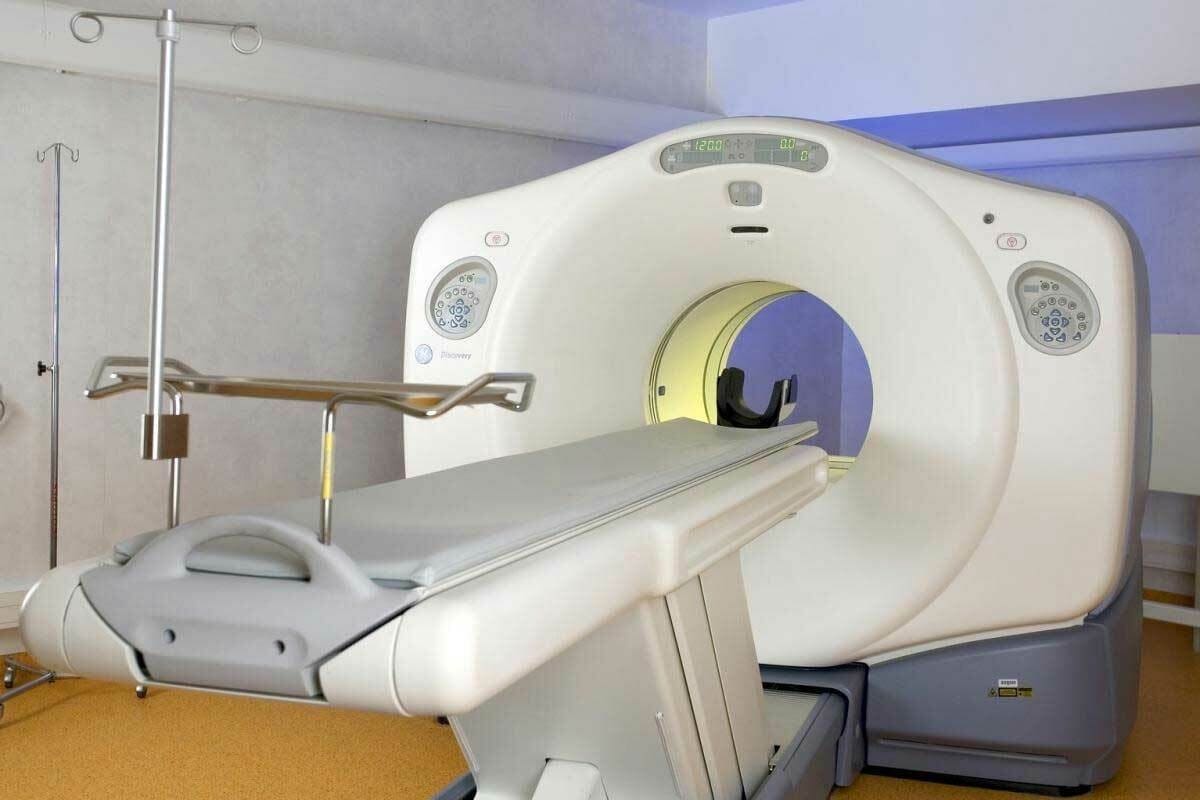Last Updated on November 26, 2025 by Bilal Hasdemir

Chronic back or neck pain can really hurt your quality of life. It often doesn’t get better with usual treatments. If you’ve tried medicine, physical therapy, or just resting, a new approach might help.
At top places like Liv Hospital, we offer cutting-edge treatments. These help patients move better and feel more comfortable.
Facet injections are a way to find and treat pain from the facet joints in the spine. These joints are key for spinal health, mainly in the lower back and neck. We inject a mix of local anesthetic and anti-inflammatory steroid meds into or around the facet joint. This is done under imaging guidance to help both diagnose and treat the pain.
Key Takeaways
- Facet injections are a minimally invasive procedure for diagnosing and treating facet joint pain.
- The procedure involves injecting local anesthetic and anti-inflammatory medications into the facet joint.
- Imaging guidance, such as fluoroscopy or CT, is used for precise needle placement.
- Facet injections can provide relief for chronic back and neck pain that hasn’t responded to other treatments.
- Leading medical institutions offer this advanced intervention as part of a complete care plan.
Understanding Facet Joints and Their Role in Spinal Health

Facet joints are between each vertebra and are vital for spinal health. They help us move our spine and keep it stable. This is key for our overall well-being.
Anatomy of Facet Joints
Facet joints are lined with a special fluid to reduce friction. They are formed by the connection of two vertebrae. This makes them important for our spine’s movement and stability.
The way facet joints are set up changes along the spine. This is because they have different roles in different parts of the spine. For example, the lumbar facet joints help us bend forward and backward but not as much in rotation.
How Facet Joints Function in the Spine
Facet joints guide the spine’s movement and keep it stable. They do several important things:
- They prevent too much movement that could hurt us.
- They share the load with the discs, spreading out the stress.
- They help us move in different ways, like bending and twisting.
When they work right, facet joints help our spine stay healthy and mobile.
Common Causes of Facet Joint Pain
Facet joint pain can come from many sources:
- Degenerative changes: Over time, wear and tear can cause arthritis.
- Injury or trauma: A sudden hit or repeated strain can harm the joints.
- Inflammatory conditions: Diseases like rheumatoid arthritis can also affect them.
Knowing these causes helps doctors find and treat facet joint pain. Treatments like facet joint injections can help a lot. They offer relief for those with chronic pain from facet joint problems.
What Is a Facet Injection? Procedure Overview and Purpose

A facet injection is a medical procedure to ease spine pain. It involves putting medication into or around the facet joints. This helps reduce inflammation and pain. We’ll look at facet injections, including their definition, types, and purposes.
Definition and Types of Facet Injections
Facet injections are divided by their location and medication. The main types are intra-articular injections and medial branch blocks. Knowing these types helps find the right treatment for spinal issues.
Diagnostic vs. Therapeutic Purposes
Facet injections have both diagnostic and therapeutic uses. Diagnostic injections numb the area to find pain sources. If pain goes away, it shows the facet joint is the problem. Therapeutic injections use corticosteroids for long-term pain relief.
Components of Injection Solutions
The solutions for facet injections mix local anesthetics and corticosteroids. Local anesthetics give quick pain relief. Corticosteroids help reduce inflammation over time. The exact mix depends on the patient’s needs and the doctor’s choice.
| Type of Injection | Purpose | Components |
| Intra-articular | Therapeutic | Local anesthetic + Corticosteroid |
| Medial Branch Block | Diagnostic | Local anesthetic |
| Combination | Both | Local anesthetic + Corticosteroid |
Common Conditions Treated With Facet Injections
We treat many spinal issues with facet injections, like facet joint syndrome and degenerative disc disease. These injections help a lot with pain and discomfort. They make patients’ lives much better.
Facet Joint Syndrome
Facet joint syndrome causes pain and swelling in the facet joints. Facet injections help by putting anti-inflammatory medicine right where it’s needed. This condition often comes from wear and tear, leading to pain and stiffness, mainly in the lower back and neck.
- Reduced pain and inflammation
- Improved mobility
- Enhanced quality of life
Spinal Arthritis
Spinal arthritis, like osteoarthritis, brings a lot of pain and stiffness to the spine. Facet injections help by cutting down inflammation and easing pain. Spinal arthritis can hit any part of the spine, but it’s most common in the lower and upper back.
Degenerative Disc Disease
Degenerative disc disease makes the discs between vertebrae wear out, causing pain. Facet injections don’t fix the discs but can help with pain from the facet joints. This condition comes from aging and can get worse with other spinal problems.
Spinal Injuries and Trauma
Spinal injuries and trauma can lead to facet joint pain and swelling. Facet injections are a good way to manage pain and help with recovery. These injuries can come from accidents, falls, or other traumatic events. They can really hurt a person’s quality of life, so quick and effective treatment is key.
By treating these common spinal issues with facet injections, we can give patients a lot of pain relief and better mobility. This improves their overall health and well-being.
Lumbar Facet Injections: Treating Lower Back Pain
Chronic lower back pain can be managed with lumbar facet injections. This procedure targets the facet joints in the lumbar spine. It’s a key treatment for patients with spinal conditions in the lower back.
Lumbar Facet Joint Anatomy
The lumbar facet joints are key to the spine’s stability and movement. They are between the vertebrae, allowing for spine flexion, extension, and rotation. Knowing the anatomy is vital for diagnosing and treating lower back issues.
Specific Conditions Affecting Lumbar Facet Joints
Several conditions can harm the lumbar facet joints, causing pain. Facet joint syndrome is one, with pain and inflammation. Spinal arthritis and degenerative disc disease also affect these joints, leading to pain and mobility issues. It’s important to know the exact condition to choose the right treatment.
Success Rates for Lumbar Facet Injections
Lumbar facet injections can greatly reduce pain for those with facet joint syndrome and related issues. Research shows they offer both short and long-term pain relief. This improves patients’ quality of life.
The success of these injections depends on several factors. These include accurate diagnosis, precise injection, and the patient’s health. By focusing on the painful facet joints, these injections can significantly help patients live more comfortably.
Facet Injection Neck: Addressing Cervical Pain
Cervical facet joint injections are a targeted way to handle neck pain. Neck pain can really mess up your day, so we aim to help with precise treatments.
Cervical Facet Joint Anatomy
The neck has seven vertebrae, with facet joints that let it move smoothly. Cervical facet joints help with bending, straightening, and turning the neck. Knowing how these joints work is key to fixing neck pain.
Conditions Affecting Cervical Facet Joints
Many issues can trouble the cervical facet joints, causing pain. These include cervical facet joint syndrome, injuries from whiplash, and wear and tear from aging. Finding out what’s causing your neck pain is the first step to fixing it.
Effectiveness for Neck Pain Relief
Cervical facet injections can really help with neck pain from facet joint problems. They put anti-inflammatory medicine right where it’s needed. This can cut down on pain and swelling, making it easier to move and live better.
People who get these injections often feel a lot less pain. This lets them do more of their daily activities without trouble. It’s a great option for those with ongoing neck pain.
The Facet Joint Injection Procedure: Step-by-Step
The facet joint injection procedure is simple and aims to relieve pain. We’ll walk you through each step, from getting ready to aftercare. This will help you know what to expect.
Pre-Procedure Preparation
Getting ready for a facet joint injection is key. Stop taking certain medications a few days before, like blood thinners. Also, tell us about your medical history, including any allergies.
On the day, come with someone to drive you home. Wear comfy clothes and don’t eat a big meal before.
During the Procedure
You’ll lie on your stomach on an exam table. The area is cleaned and numbed to reduce pain. We use imaging to guide the injection into the joint.
The whole thing takes about 30 minutes to an hour, depending on the number of joints.
Post-Procedure Care
After, you’ll be watched for a bit to see if you have any bad reactions. We’ll give you clear instructions for aftercare, including managing side effects and when to start activities again.
You might feel sore where we injected, but over-the-counter pain meds can help. Avoid hard activities for the rest of the day and follow our advice for a good recovery.
Imaging Guidance for Precise Facet Injections
Imaging guidance makes facet injections more precise. It lets doctors see the facet joints and around them in real-time. This ensures the needle goes exactly where it should.
Fluoroscopy Guidance
Fluoroscopy is a key tool for guiding facet injections. It shows a live X-ray image on a screen. Doctors can see the needle move and adjust its path as needed. Fluoroscopy guidance helps navigate the spine’s complex paths and targets the right spot.
CT-Guided Injections
CT-guided injections use scans to show detailed spine images. This method is great for complex spines or hard-to-reach joints. CT guidance is very accurate, lowering risks and boosting the treatment’s success.
Importance of Precision in Needle Placement
Getting the needle in the right spot is key for facet injections. When the medicine hits the right area, it works better. Plus, it cuts down on risks like nerve damage or infection, making the treatment safer.
In summary, imaging guidance is essential for facet injections. It lets doctors aim for the best results. With tools like fluoroscopy and CT scans, they can place the needle with precision. This leads to better care for patients.
Benefits and Effectiveness of Facet Joint Injections
Facet injections are a valuable treatment for many spinal conditions. They provide both diagnostic and therapeutic benefits. By delivering medication directly to the facet joints, these injections can significantly alleviate pain and inflammation.
Short-term and Long-term Pain Relief
Facet joint injections offer both short-term and long-term pain relief. They contain a local anesthetic and a corticosteroid. The anesthetic gives immediate pain relief, while the corticosteroid reduces inflammation over time.
Duration of Pain Relief
| Treatment | Short-term Relief | Long-term Relief |
| Local Anesthetic | Immediate to several hours | Not applicable |
| Corticosteroid | Several days | Several weeks to months |
Improved Mobility and Function
By reducing pain and inflammation in the facet joints, injections can improve mobility and function. Patients often report being able to perform daily activities with greater ease and less discomfort.
Diagnostic Value
Facet joint injections also have significant diagnostic value. They provide temporary pain relief, helping healthcare providers determine if the facet joints are the source of pain. This information is key for developing an effective treatment plan.
When Facet Injections Are Most Effective
Facet injections are most effective for patients with facet joint syndrome, spinal arthritis, or other conditions affecting the facet joints. They are beneficial for individuals who have not responded to conservative treatments like physical therapy or oral medications.
In conclusion, facet joint injections offer many benefits, including pain relief, improved mobility, and diagnostic clarity. By understanding when and how to use these injections, healthcare providers can help patients achieve better outcomes and improve their quality of life.
Potential Risks and Side Effects of Facet Injections
It’s important to know the risks and side effects of facet injections before deciding. These injections are usually safe and help with back and neck pain. But, there are some risks and complications to be aware of.
Common Side Effects
Most people don’t have serious side effects from facet injections. Common issues include:
- Soreness or bruising at the injection site
- Temporary increase in pain
- Facial flushing
- Insomnia or disturbed sleep
These side effects are usually mild and go away in a few days.
Rare Complications
Even though rare, facet injections can lead to serious complications. These include:
- Infection at the injection site
- Nerve damage
- Allergic reactions to the medications used
- Bleeding complications, specially in patients with bleeding disorders
Risk Factors to Consider
Some factors can make complications from facet injections more likely. These include:
- Bleeding disorders or taking anticoagulant medications
- Allergies to corticosteroids or local anesthetics
- Active infections or immunocompromised status
| Category | Potential Risks and Side Effects |
| Common Side Effects | Soreness, bruising, temporary pain increase, facial flushing, insomnia |
| Rare Complications | Infection, nerve damage, allergic reactions, bleeding complications |
| Risk Factors | Bleeding disorders, allergies to medications, active infections, immunocompromised status |
Recovery and Pain Relief Timeline After Facet Injections
Knowing what to expect after a facet injection can make a big difference. We help our patients understand the recovery and pain relief process. This way, they know what to expect.
Immediate Post-Procedure Effects
Right after the injection, patients might feel different things. Some might feel better right away, while others might feel more pain. The area where the injection was given might be a bit swollen or sore.
We tell patients to rest for the rest of the day. This helps the medicine work better and lowers the chance of problems.
Short-term Recovery (First Week)
In the first week, patients usually start to feel the treatment’s effects. Pain relief can vary; some see big improvements, while others feel better slowly over a few days.
It’s key to follow our instructions for a smooth recovery. This includes using ice, taking medicine as told, and slowly getting back to normal activities.
Long-term Outcomes and Duration of Relief
The long-term effects of facet injections can differ a lot. Some people get long-lasting pain relief that lasts months or even years. Others might need more treatments to keep feeling better.
We keep a close eye on our patients’ progress and adjust plans as needed. Regular check-ups help us see how well the injection worked and plan for the future.
When to Seek Follow-up Care
If patients notice anything strange, like more pain, fever, or infection signs, they should call us right away. It’s also important to keep scheduled follow-up appointments. This lets us check how well the treatment is working and talk about next steps if needed.
By knowing what to expect after facet injections, patients can better plan for their recovery. We’re here to offer full care and support every step of the way.
Alternative and Complementary Treatments to Facet Injections
Looking for options other than facet injections? There are conservative approaches and interventional procedures that can help with pain. Knowing these alternatives can help patients choose the best treatment for them.
Conservative Approaches
Conservative treatments aim to manage pain and improve function without surgery. They include:
- Physical therapy to strengthen the muscles around the spine and improve flexibility
- Medications such as NSAIDs or muscle relaxants to reduce pain and inflammation
- Lifestyle modifications, including weight management and ergonomic adjustments
We suggest a mix of these treatments for the best results. For example, physical therapy works well with the right medication and lifestyle changes.
Other Interventional Procedures
When conservative methods don’t work, other procedures might be needed. These include:
- Radiofrequency ablation, a procedure that uses heat to disable the nerves causing pain
- Platelet-rich plasma (PRP) therapy, which involves injecting platelet-rich plasma derived from the patient’s own blood to promote healing
These procedures can offer long-term relief for some. We choose the best procedure for each patient based on their needs.
Surgical Options When Injections Fail
If injections and other treatments don’t help, surgery might be considered. Surgery can range from simple to complex, depending on the condition and its severity.
We help our patients decide on the best treatment. We consider their health, the condition, and their preferences.
Conclusion: Is a Facet Injection Right for Your Back or Neck Pain?
Facet injections are a helpful treatment for back and neck pain. We’ve looked at how facet joints work, the injection process, and its benefits and risks.
People with chronic pain may find relief with facet injections. The procedure is safe and targets the pain area accurately. It’s not a cure, but it can help manage pain and improve life quality.
Thinking about facet injections? It’s important to consider the good and bad sides. Most side effects are mild and short-lived. But, there are rare risks. Your doctor will decide if it’s right for you based on your health and needs.
If you’re dealing with ongoing back or neck pain, talking to a doctor about facet injections is a big step. Knowing your options and making a smart choice can help you manage your pain better. This way, you can improve your life quality.
FAQ
What is a facet injection?
A facet injection is a small procedure. It involves putting medicine into the facet joints. This is to help with back and neck pain.
What are facet joints, and how do they contribute to spinal health?
Facet joints are small joints between vertebrae. They help the spine move and stay stable. They are key to keeping the spine healthy and moving well.
What conditions are treated with facet injections?
Facet injections help with many issues. These include facet joint syndrome, spinal arthritis, and degenerative disc disease. They also help with spinal injuries and chronic pain.
How is a facet injection performed?
First, the patient is positioned and the area is cleaned. Then, a local anesthetic numbs the site. A needle is guided into the joint, and medicine is injected for pain relief.
What is the difference between diagnostic and therapeutic facet injections?
Diagnostic injections use a local anesthetic to find pain sources. Therapeutic injections use a steroid for longer pain relief.
Are facet injections painful?
The procedure might be a bit uncomfortable. But, a local anesthetic makes it less painful. Some soreness might follow, but it’s usually short-lived.
How long does pain relief from facet injections last?
Relief time varies by person and condition. Some feel better for months, while others might need more injections.
What are the possible risks and side effects of facet injections?
Side effects include temporary pain or discomfort. Rarely, there could be infection, allergic reactions, or nerve damage. Always talk to your doctor about risks.
Can facet injections be used for neck pain?
Yes, they can help with neck pain. This is due to conditions affecting the cervical facet joints. They are a good option for cervical pain.
How do I know if facet injections are right for me?
Talk to your doctor to see if facet injections are right for you. They will evaluate your situation and discuss your medical history.
What are the alternatives to facet injections?
Other options include physical therapy, medication, and radiofrequency ablation. For severe cases, surgery might be considered. Discuss these with your doctor.
How soon can I resume normal activities after a facet injection?
Most can go back to normal activities soon after. But, avoid strenuous activities for a bit. Your doctor will give specific advice.
References
- Cohen, S. P., & Raja, S. N. (2020). The role of facet joints in chronic spinal pain and the effectiveness of percutaneous interventions. Current Pain and Headache Reports, *24*(5), 21. https://pubmed.ncbi.nlm.nih.gov/32206959/






